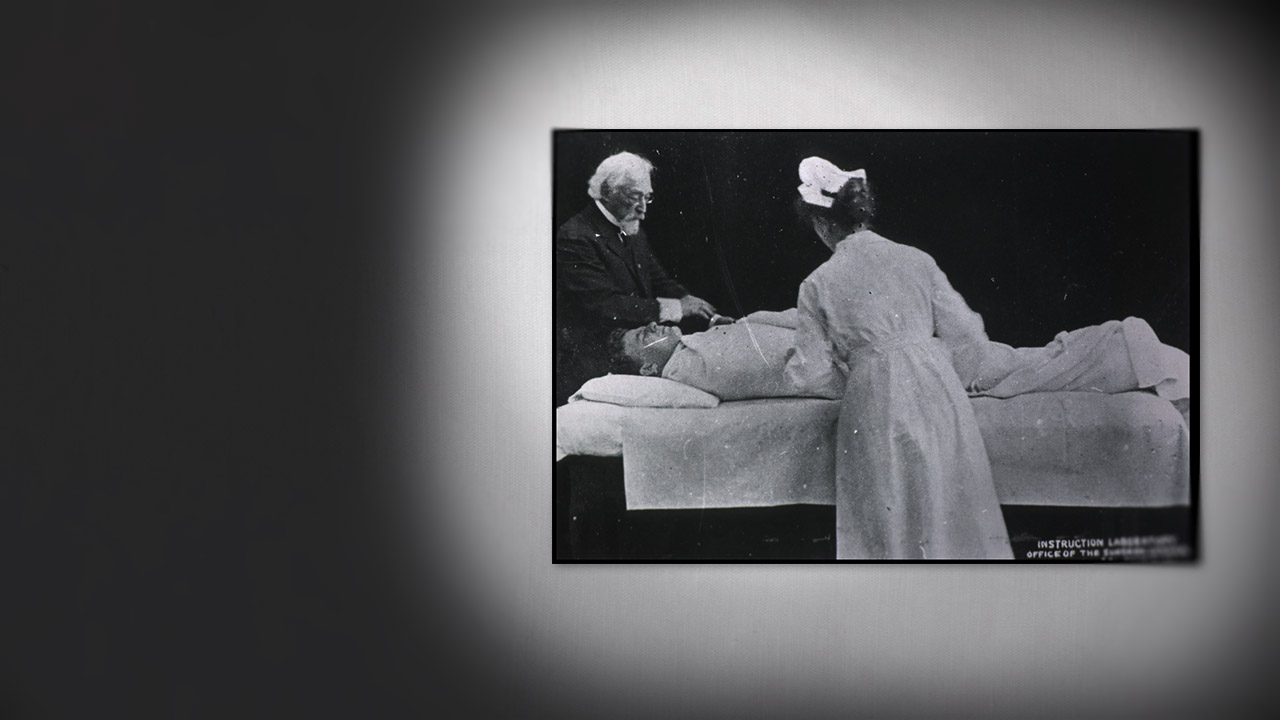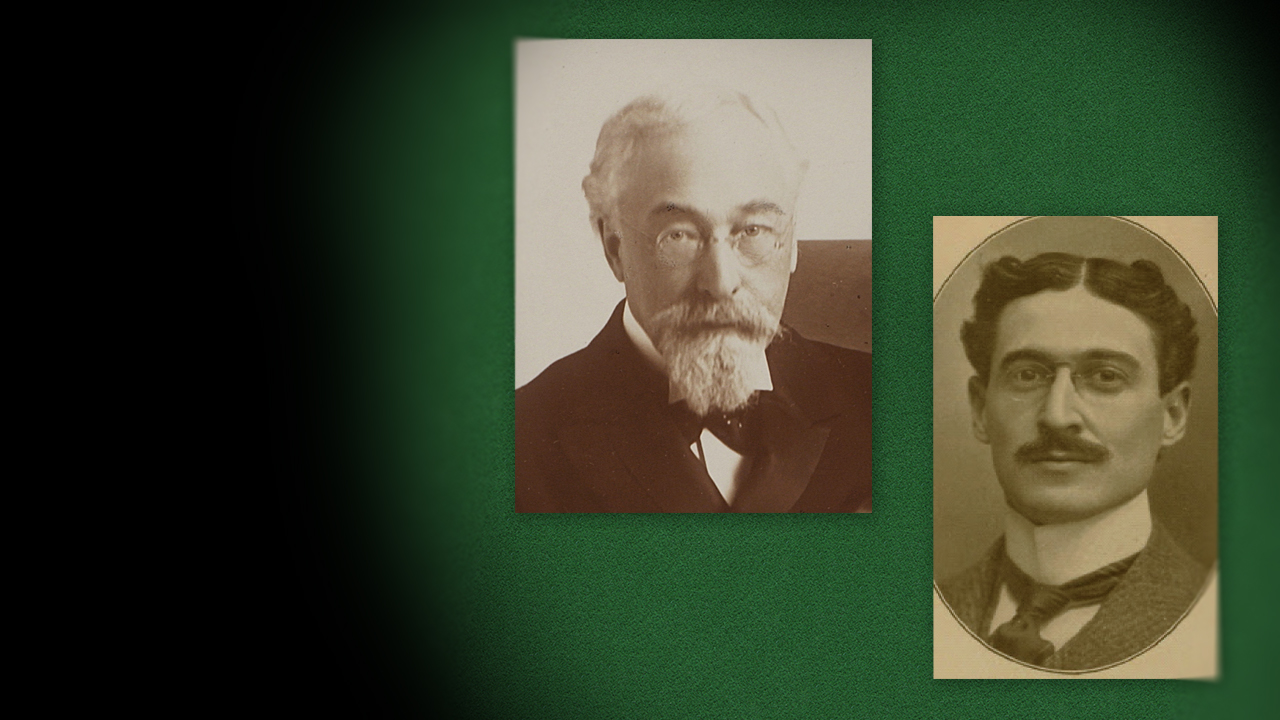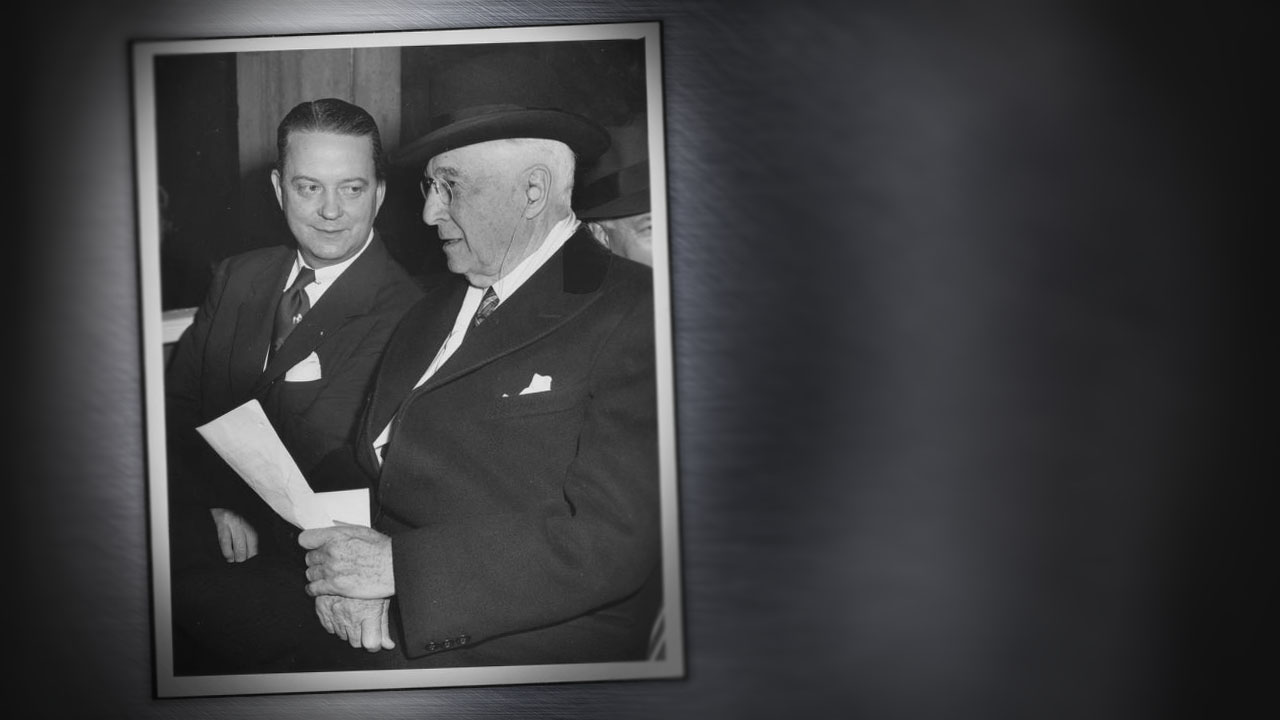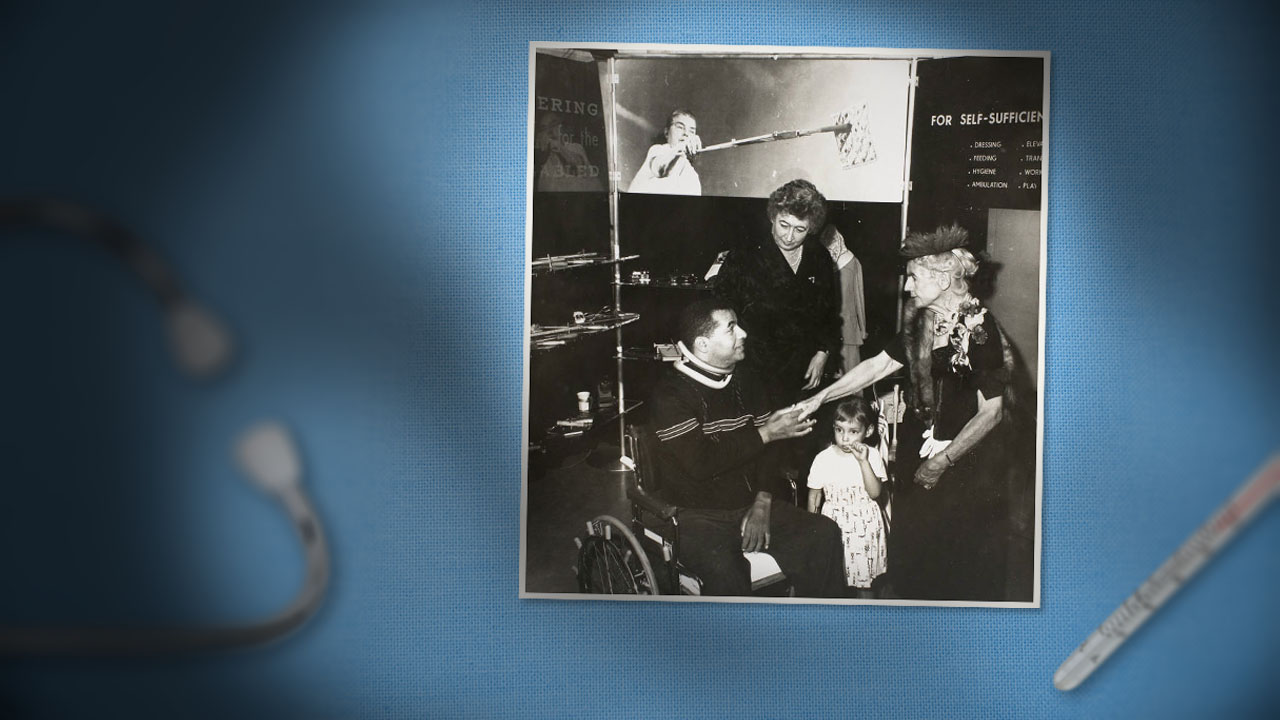Dr. Simon Baruch, pictured here with a patient and a nurse, was committed to using his medical knowledge for the common good.
As a surgeon in the Confederate Army during the civil war he was known for treating anyone who was wounded, even Union soldiers.
After moving to New York City in 1880, Simon Baruch became a pioneering advocate for public health, helping to establish bathing facilities for the large immigrant population of the Lower East Side.
He had a great deal of influence on his son Bernard, helping to shape his attitude toward money.

In his memoir Bernard Baruch describes his father’s reaction to the announcement that his son had made a million dollars:
His kindly face assumed a quizzical expression, as if he experienced some difficulty in grasping the fact of a million dollars. Thinking that he might be questioning the accuracy of my accounting, I offered to show him the actual securities.
‘No,’ he said, ‘I will take your word for it,’ and began to talk of something else.
Perhaps I should not have expected any other reaction. Father always had regarded making money as of secondary importance compared to moral values and one’s usefulness to the community.
Bernard M. Baruch, Baruch: My Own Story

In honor of his father, Bernard Baruch gave generously in support of medical practice and research. In the 1920s he funded a hospital in his hometown of Camden, South Carolina.
Seeking to advance his father’s work in the use of hydrotherapy for rehabilitation, he became a major benefactor of New York University’s Institute of Physical Medicine and Rehabilitation, founded by Dr. Howard Rusk, a leader in the development of rehabilitative medicine.

Following her father’s philanthropic direction, in 1958 Belle Baruch dedicated a room at the Institute in honor of Edith Boling Wilson’s 85th birthday.
Annie Baruch also supported the medical field, funding Doctors Hospital in New York City. The Baruchs’ philanthropy extended to other areas as well, including Bernard’s significant support of his alma mater.

To return to the trail click NEXT STOP
To return to the Hobcaw House Living Room click
